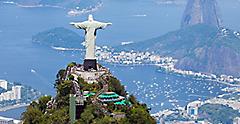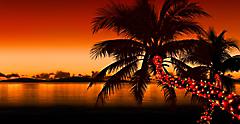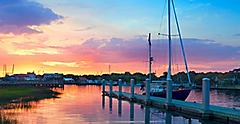
Discover The Best Places To See The Northern Lights
Visit The Northern Lights & Aurora Borealis With Ideal Timing
By Robert Schrader | Published on May 3, 2023
Finding the best place to see the northern lights is critical, but it's not the only detail that matters. Before you go aurora chasing, brush up on the facts about this dazzling natural spectacle. This captivating phenomenon, also known as the aurora borealis, occurs near the polar regions due to the interaction of solar radiation with Earth's magnetic field. Ever wonder just how old are the northern lights? Surprisingly, the first historical mention of the lights is from a Babylonian king in about 500 B.C. Since then, the lights have been a thing of wonder.
When planning your aurora spotting cruise, you'll need to consider timing. Since the northern lights are generally only visible under very clear skies, keep in mind the time of year you visit, the time of day you set out and the weather. Here is some advice on planning your trip — and a whole lot of inspiration to catch these lights dancing through the sky.
1. Admire The Aurora Borealis Amid Alaska's Wilds
See and Visit the Northern Lights in Alaska
Within the United States, Alaska is definitely the best place to visit the northern lights due to how far north it is. Ideally, you start in Anchorage or Fairbanks and drive into Denali National Park. The dark skies in winter here make it ideal for seeing the lights. Be prepared to "aurora chase" in Alaska because of how fickle the lights can be. Reserve at least a few days to maximize your chances of seeing them. Other winter activities in Alaska, such as dogsled mushing and snowmobiling, will keep you busy and satisfied, even on days when you aren't lucky enough to get a glimpse of the lights.
While it's difficult to book a northern lights Alaska cruise since cruises only sail during summer season, you may get lucky enough to see them if you take to the seas in September, which is the earliest you can expect the Aurora to appear. Another option might be to stay in Alaska after your cruise, at which point you can follow the instructions above and drive as far north as you can.
2. Go Chasing Northern Lights — And Waterfalls — In Iceland
The best time to see the northern lights in Iceland is as deep into winter as you can go. Late December and early January are best because they're the darkest times of the year, but the northern lights can appear as early as September or as late as March.
As for where in Iceland to see them, it really depends on how comfortable you are with winter driving. If you can rent a 4x4, you'll be all set. Drive slowly on icy roads, taking in the stunning scenery along the way, including Reykjavík, Jokulsarlon Glacier Lagoon on Iceland's southern coast or Kirkjufellfoss waterfall on the Snaefellsnes Peninsula in the northwestern part of the country. Alternatively, you can book organized tours from Reykjavík to the nearby "Golden Ring" — highlights of which include Gullfoss Waterfall and the Great Geysir.
3. See The Northern Lights In Santa Claus's Homeland
4. Look Up Into Norway's Night Sky
5. Head South To See The Aurora Australis
While the best time to see the northern lights is in the northern winter, this is flipped for the aurora australis, aka the southern lights. Visible in the southern polar regions of South America, Australia, New Zealand and Antarctica, the southern lights are easiest to see during the months of June and July on an Australian cruise, although they can be visible as early as April and as late as September, depending on how far south you are.
Popular destinations to see the southern lights include Cloudy Bay, Tasmania and Ushuaia,Argentina, the latter of which is a popular gateway for cruises to Argentina during the summer months. New Zealand's Mt. Cook (known to the indigenous Maori people as "Aoraki") also provides a stunning foreground for the aurora australis, as does the Church of the Good Shepherd in nearby Lake Tekapo.
The Aurora Beckons
The best place to see the northern lights is the one that fits in best with your future travel plans. No matter where you see the northern lights, or how long you have to wait in freezing cold to tick them off your bucket list, you've now got all the information — and inspiration — you need to make it happen.
Chase the bright lights when you book a Baltic cruise.




















